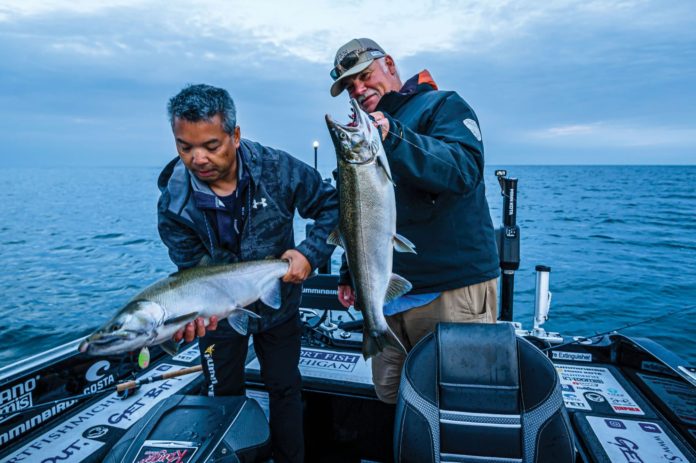Northern Michigan Trout Fishing Tips
Traverse writer and avid fisherman Drew VanDrie shares his advice for fly fishing for trout:
TECHNIQUE | Practice casting before you hit the river. Building up your skill and confidence will make you more effective on the river when you need to make an accurate presentation. That being said, ugly casts still catch fish! Don’t become so obsessed with a beautiful back cast that you spend your whole time false-casting. Keep your fly on the water as much as possible because that’s where the fish are!
WAIT AND SEE | It’s tempting to be overeager and immediately hop in the river and start stripping out line. Instead, sit by the bank and watch the potential lies, bugs on the surface, and hopefully, rising trout. (This is a great opportunity to sip that cold beer you slipped in your sling pack.) Check not only the surface but also overhanging riparian vegetation and grasses for insects. This will help clue you into what the fish are feeding on.
MATCH THE HATCH OR MAKE YOUR OWN | In an ideal situation, the river surface is saturated with insects, and the trout in response are actively feeding. In this scenario, try to pluck a few insects that drift by for closer inspection and then match as closely as possible to what you have in your box. The order of importance for matching is silhouette (matching the general shape of the insect), size and color. Like a well synchronized back cast, fly fishing is about timing, and hitting a hatch can take a lot of trial and error. Being on the water consistently will help you recognize better conditions for a solid bug hatch (along with a decent dose of luck).
PROSPECTING | A stretch of river dimpled with scores of blithely rising trout is the idyllic scene fly fishing aesthetes like to promote, but it’s often the exception rather than the rule. In this instance, a decent tactic is “prospecting.” Like a miner striking blindly for precious metal, prospecting is floating an enticing morsel overtop of where a trout likely lies. Utilizing an “attractor” or “stimulator” pattern (a larger fly that has numerous “buggy” qualities, rather than close imitation), drifting over seams, tailouts, undercut banks and alongside logs and other structures all help to lure out lurking brown and brook trout.
LOCAL KNOWLEDGE | For particular trout patterns, your best resource is your local fly shop. They will steer you toward a handful of patterns to at least make you dangerous.
PATIENCE AND PERSISTENCE: Exploring more river will inevitably make you a better trout fisherman. Finding less accessible water will yield trout that have experienced less fishing pressure, which yields better results for the angler willing to venture off the beaten trail (or trout stream). Keep showing up and keep casting.
Credit: Source link






























